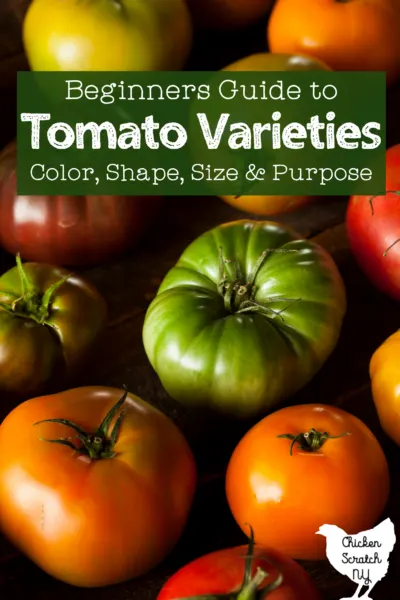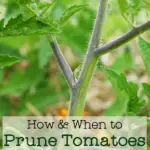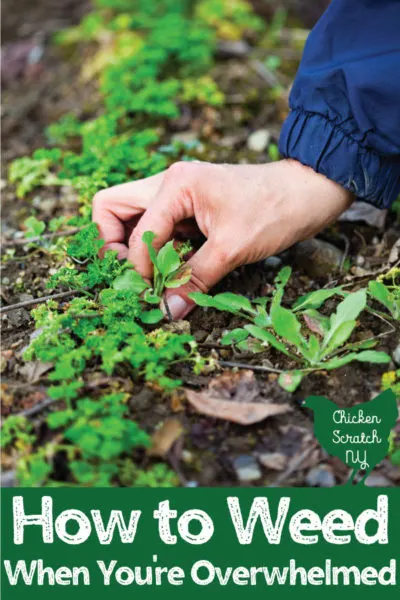Dealing with tomato suckers is an inevitable part of growing fresh tomatoes. The weedy growth can quickly turn your tomato patch into a jungle but with a little understanding you can learn to love them!
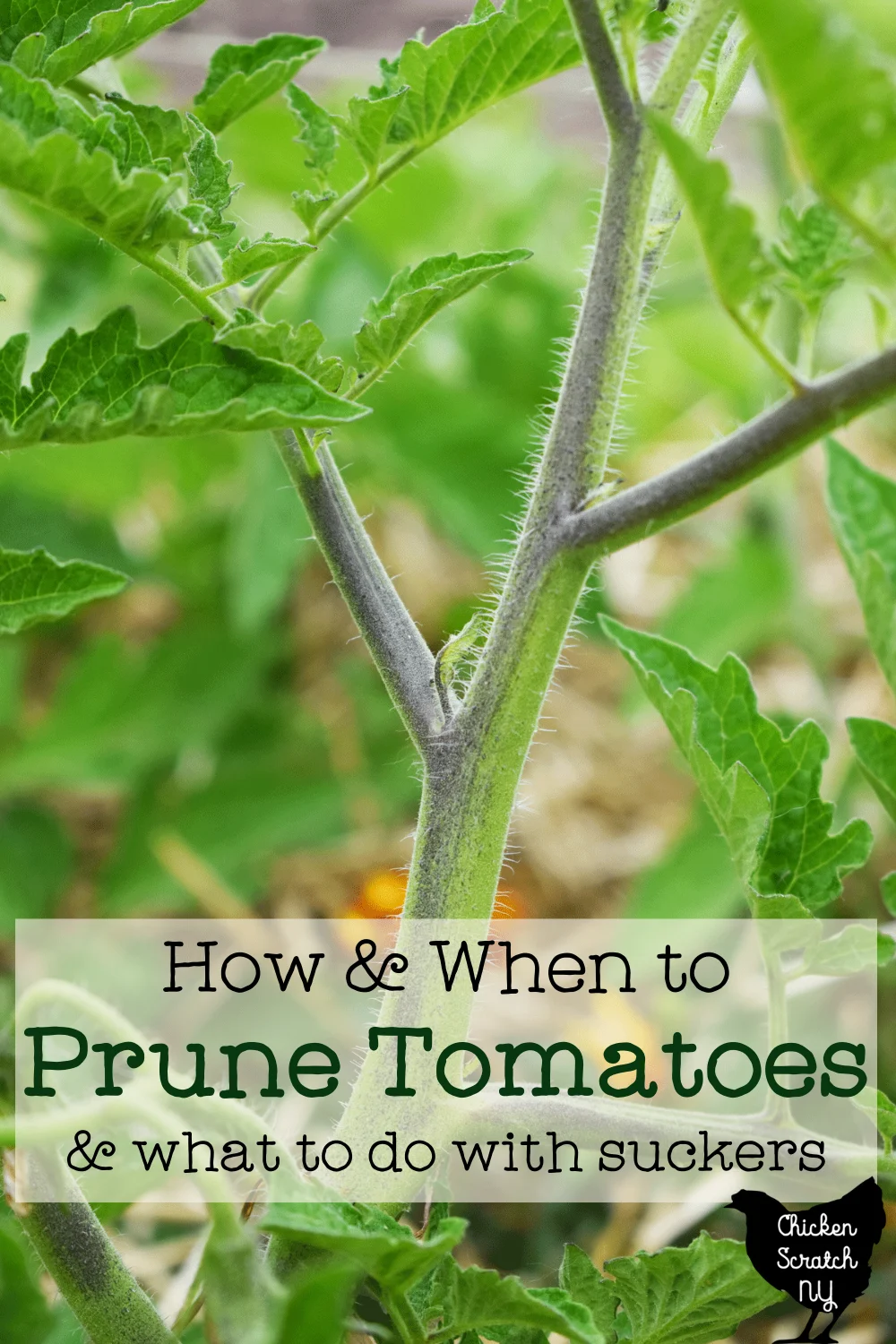
When the days are long and hot it sometimes seems like your tomato plants double in size every day. If you aren’t pruning your plants that’s not far from the truth!
I have a love/hate relationship with tomato suckers and I think it’s only fair to give both sides of the story.
What are Tomato Suckers?
This is probably the best place to start, after all you can’t remove them if you don’t know what they are!
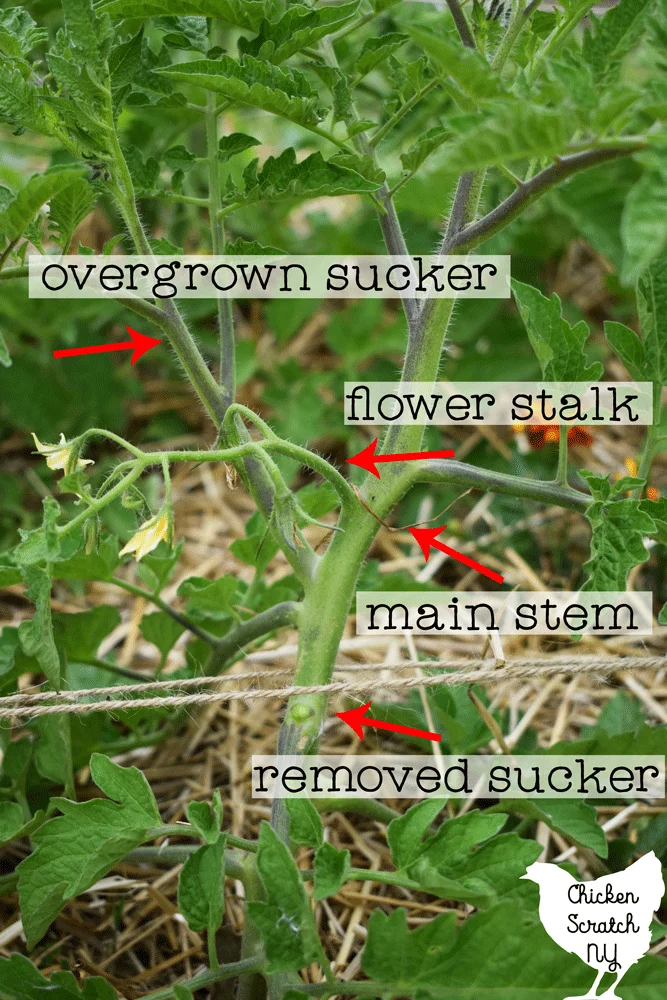
“Suckers” are the shoots that grow in the space where a leaf branches off the main stem. Suckers start out as a tiny leaflet and grow into a giant tomato monster as soon as you turn your back.
It’s very important to remove the suckers and not the flower stalks which also grow off the main stem. Most of the time they’ll be growing off the stem between leaves and not directly on top in the armpit (leafpit?).
I can hear you thinking that you love tomatoes and you’d be happy to have a tomato monster in your backyard. But just like with Betty White and the alligator in Lake Placid, it’s not a good idea (does anyone get that reference?).
It might seem like a bad idea to go around popping off pieces of a tomato plant, but I promise you, they bounce right back and they’ll be even better than they were before.
However, if time is not on your side it’s perfectly fine to let your tomato plants go wild.
Why you should Prune Tomato Suckers
For a bit of context, I live in central New York and we have wet, humid summers. As a result, my garden planning involves lots of thought about airflow and not so much concern about water conservation (though I’m definitely on Team Mulch!).
Jumping into the biggest reason to prune your tomatoes:
Improve Air Flow
Tomato blight is the boogie man of tomato land. It’s a fungal infection that can decimate your plants.
One of the best ways to prevent blight is to properly space your tomato plants, keep them off the ground with some sort of support system and prune them.
Pruning away the suckers allows for air and light to reach into the plants keeping them healthier, not only from blight but also in general.
Easier to Support
I’m a huge fan of trellising things, it opens up space in the garden, it makes harvesting easier and it also keeps your vegetables out of the dirt (and away from a lot of pests!).
Trellising is really easy when you have a single main stem to follow, and if you get rid of all the suckers that’s exactly what you’ll have. If you decide not to prune your tomato plants you’ll end up with more of a tangled ball and less of a neat vine.
Every single sucker that stays on the plant will become its own stem that sends out more suckers. It just keeps repeating like a Hydra losing its head until you have so many stems and suckers that you can’t your tomatoes.
It’s inevitable that a sucker (or two) will get away from me and rather than leaving a giant gaping wound in my plant I’ll let it grow. Over time you might even have trouble telling which was the main stem and which was the sucker.
I’ve found that the area where they join together can be prone to splitting, especially if you’re growing large, heavy varieties of tomato. Because of this, if you start trellising your plants it’s pretty important to keep trellising.
Easier Picking
Believe it or not, tomatoes are easier to pick when you can see them! Pruning away excess vines keeps your tomatoes more visible.
It also lets the sun into the plant and onto the fruit for faster and better ripening.
Larger Tomatoes
If you’ve ever grown flowers you’ve probably seen the advice to remove side shoots and let the plant put all its energy into one giant, spectacular flower. That’s the best way to get the really impressive blooms.
The same is true for tomatoes, if you keep your plants pruned to a single main stem and limit the number of fruit they can produce you will have larger tomatoes.
Of course, this also means fewer tomatoes but that’s not necessarily a bad thing. If you’re making sauce and you have to skin a bushel of tomatoes you’re better off with a few, larger ones than a million tiny ones.
I tend to be strictest with pruning my paste tomatoes, and if time gets in the way I’ll let my cherry and grape tomatoes go a bit wild.
Determinate vs Indeterminate Tomatoes
Before you think this tomato pruning thing is easy and you’ve got a handle on it I need to throw a quick wrench in the system.
While there are hundreds (probably thousands) of varieties of tomatoes and a dozen ways to break down the types, there are two specific growth patterns that tomatoes follow.
Read more about Tomato Varieties
These categories are Determinate and Indeterminate, there are a few characteristics you can look for but your best bet is to check the seed pack or label.
Determinate tomatoes grow to a specific size and stop, as a result, all of the tomatoes on the plants tend to ripen at the same time. Determinate tomatoes have thicker stems, and most people recommend against pruning them.
I’m a big fan of keeping tomatoes and leaves off the ground so I pop off the lowest leaves as well as any suckers below the first set of flowers. My favorite tomato, the Principe Borghese, is called a vigorous determinate by Fedco and the plants have thick, meaty stems, and are very aggressive growers.
As a result, I do a little bit of pruning, just to keep them from taking over the whole bed. It’s a personal preference thing, you gotta do some experimenting and see what works for you.
The majority of tomatoes are Indeterminate, meaning they just keep growing and growing until they are killed by frost or disease or you rip them out of the ground. Indeterminate respond really well to pruning.
When to Prune Tomato Suckers
The best time to prune your tomato plants is when the suckers are tiny and you can pinch them off with your fingertips.
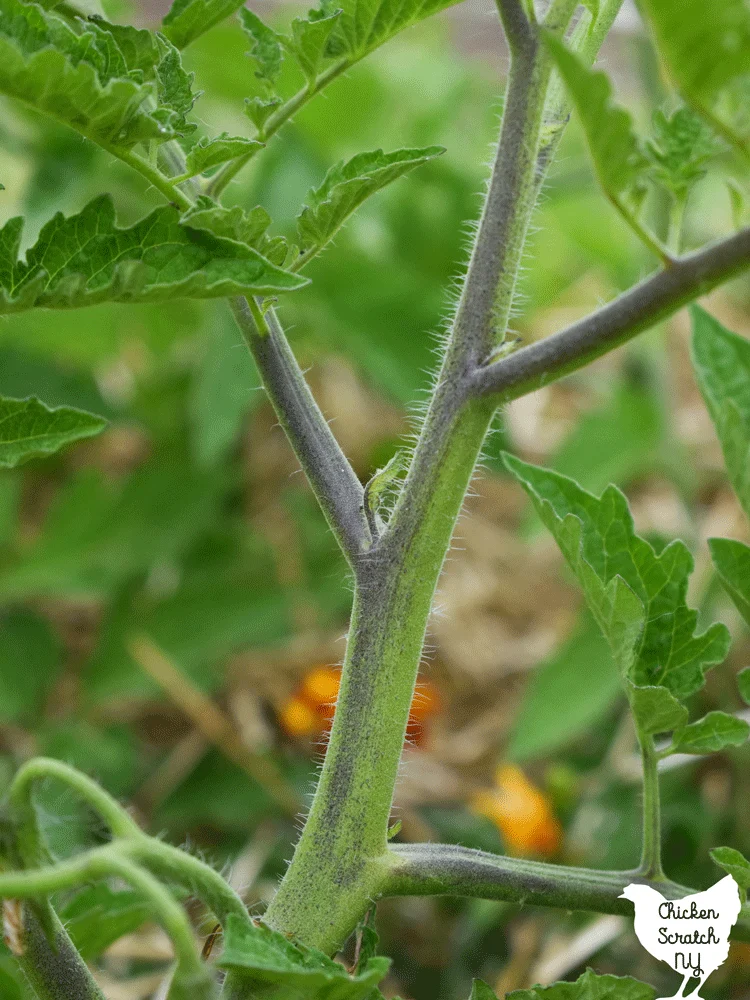
In my experience it’s like waiting for an avocado to ripen, you blink too long and the opportune moment has passed.
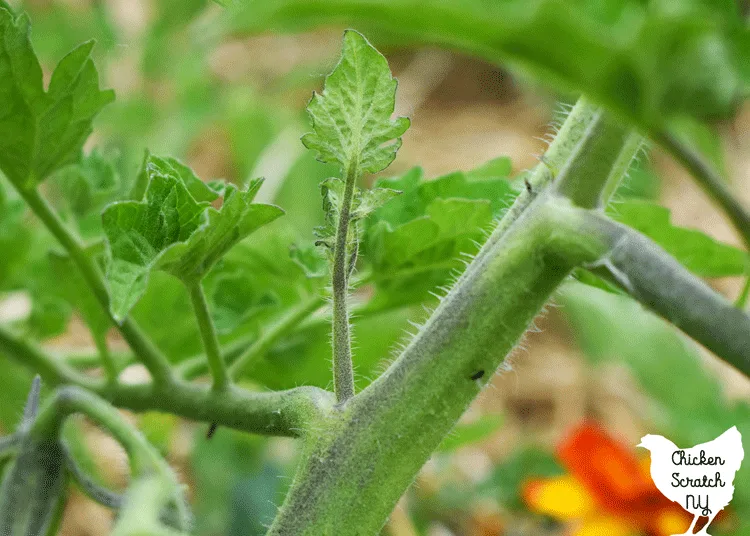
You can still remove tomato suckers when they’re larger, I still pop them off with my fingers (this will stain your hands!) and as long as they’re narrower than a pencil they snap right off.
Unfortunately, this isn’t a one-and-done activity. As long as your plants are growing and adding new sets of leaves you’ll have suckers to remove.
On the bright side once you know what you’re looking for it’s a pretty quick activity, even if you have an abundance of tomato plants!
What to do with Tomato Suckers
As long as your tomato plants aren’t diseased you can toss the pruned suckers in the compost, or throw them in the aisle between garden beds to fry in the sun. If they are showing signs of disease toss them in the garbage and wash your hands before you handle any other plants.
Or you can use them to GROW A TOMATO ARMY!
How to Propagate Tomatoes from Suckers
Tomatoes are pretty peculiar plants, unlike a lot of plants are that super fussy about soil depth (I’m looking at you peonies!) tomatoes have the ability to grow roots from anywhere on the stem.
That means you can pop off a sucker, drop it in soil or a glass of water and it’ll grow roots. All you need to do is remove any leaves that would be below the soil and keep them moist.
I usually keep my sucker propagated plants in the house out of the direct sun just until the roots have established themselves then they can get moved out to the garden or into a pot.
Unexpected Benefit
There is one more time that tomato suckers come in handy. During a recent wind storm, I lost the top half of one of my cherry tomato plants.
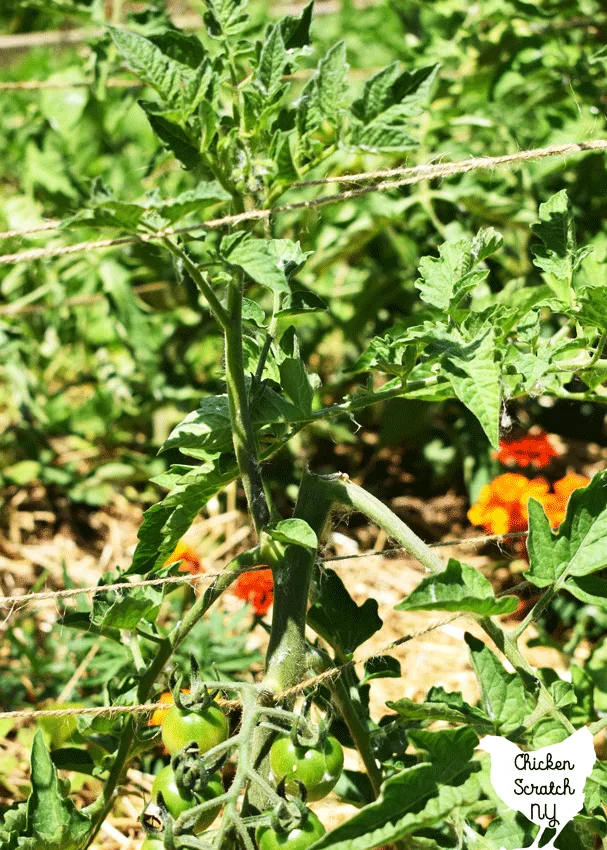
It was partially bad luck (it’s usually windy but this was bad) and partially my fault for not doing a better job keeping up with trellising my plants.
The plant snapped off right above a leaf, fortunately, I hadn’t yet removed the sucker and now it’s taking over and becoming the main stem of the plant.
Instead of losing a whole plant, I’m just set back a little bit. In a month you’ll never be able to tell that this plant is any different than the others in the bed!
Check out my Vegetable Garden page for more ideas or start here:
